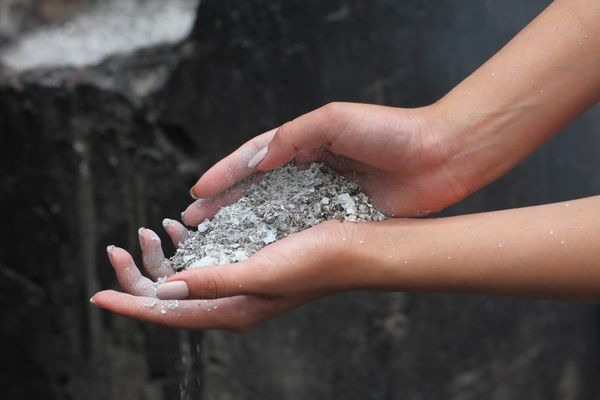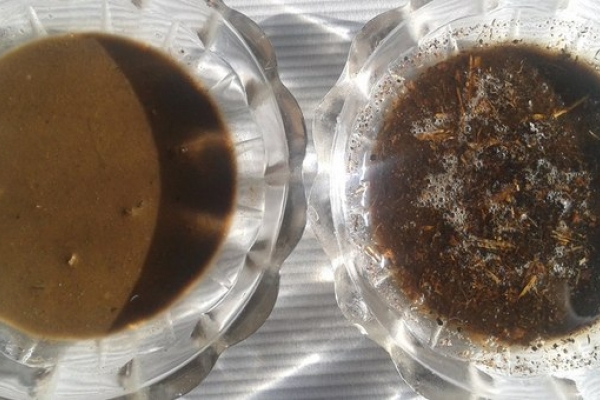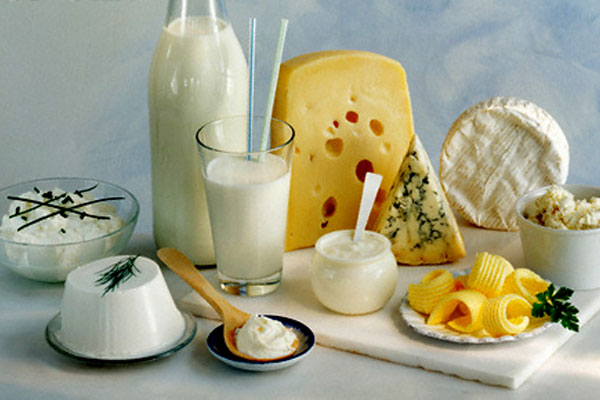How to feed strawberries in autumn - the rules of autumn fertilization
Content
Terms and scheme of feeding
Leaving yourself and your loved ones in the harvest season without fragrant berries is a real crime. Therefore, proper attention should be paid to feeding strawberries, because not all gardeners can boast of having a plot with rich black soil. After the end of the fruiting period, do not forget to cut the old leaves from the bushes. After all, they can cause many diseases. After this procedure, you can carry out top dressing.
The fertilization scheme is carried out in three stages: in the spring, in the summer after the harvest is harvested, and in the fall. The main task of autumn feeding is to prepare plants for winter. It is carried out in two stages. The first autumn feeding should be carried out in early September, when there are still leaves on the bushes. Pick a dry, sunny day and get to work. You can make Kemir, no more than 50 grams per 1 sq. The second should be held in October. At this time, you can add potassium humate.  One-year-old plants need to be fed without fail, because without fertilizers they will not be able to successfully survive the cold winter. Of course, the richness of the entire crop directly depends on whether the strawberries were fed in the fall or not. But for young plants, it is simply vital, because without it the chances of a successful wintering are reduced. It will be great if you add manure (horse, or cow) to the garden before the frost appears. In order not to harm the plants, adhere to the fertilization scheme: more than 3 kilograms of manure cannot be applied per square meter.
One-year-old plants need to be fed without fail, because without fertilizers they will not be able to successfully survive the cold winter. Of course, the richness of the entire crop directly depends on whether the strawberries were fed in the fall or not. But for young plants, it is simply vital, because without it the chances of a successful wintering are reduced. It will be great if you add manure (horse, or cow) to the garden before the frost appears. In order not to harm the plants, adhere to the fertilization scheme: more than 3 kilograms of manure cannot be applied per square meter.
What to feed
The future harvest depends on what we feed the berries with. Therefore, this matter needs to be taken seriously.
All fertilizers can be divided into three types:
- organic;
- mineral;
- mixed.
Organic fertilizers for strawberries in the fall are a win-win option: they are suitable for feeding any plants, and berries are no exception. Therefore, you can fertilize the berries with humus, manure, wood ash. Chicken droppings will also come in handy, but you must first fill it with water and let it infuse. It is dangerous to use manure in its pure form as a fertilizer, so before feeding, dilute it in a ratio of 1:10. There is no need to dissolve ash, just pour it under the bushes.
Organic fertilizers for strawberries in the fall are also good because they can serve as a fur coat that will protect your berries in the cold winter. Therefore, they are especially needed by plants. You can also feed strawberries with mineral complexes, because they contain all the necessary useful elements. Mineral fertilizers can be applied not only in autumn. After the snow has melted, you can pamper your plants with them again.
Of course, which fertilizer to use is up to you. But in order to enhance their effectiveness, it is necessary to use both mineral and organic fertilizers for feeding. Remember also one important rule: Nitrogen compounds are best used to approve a one-year plantation.
We prepare fertilizers ourselves
You can make a wonderful, balanced nutritional formula yourself.The composition of the fertilizer depends on when exactly you are feeding. If in early September, then the strawberries should be fertilized with a mixture of diluted fermented mullein and wood ash. Expect that half a glass of ash is needed for one bucket of mullein.
As for the October feeding, it is enough to dissolve one glass of wood ash in ten liters of water. Add 2 more tablespoons of nitrophoska to this mixture, as well as 30 grams of potassium fertilizer. Now water each strawberry bush with fertilizer. After feeding with such a solution, the berries will undoubtedly give a good harvest.
As a basis for fertilization, you can use and, as it might seem at first glance, products that are not at all suitable for this. For example, whey and milk. Fermented milk products are rich in sulfur, calcium, phosphorus, nitrogen.  In addition, they not only enrich the plants themselves, but also have a beneficial effect on the soil. Everyone knows that berries feel best on slightly acidic soil, and fermented milk products can make it just like that. To prepare fertilizers, you just need to add ash, manure and humus to milk or whey.
In addition, they not only enrich the plants themselves, but also have a beneficial effect on the soil. Everyone knows that berries feel best on slightly acidic soil, and fermented milk products can make it just like that. To prepare fertilizers, you just need to add ash, manure and humus to milk or whey.
Another unexpected homemade fertilizer recipe is bread dressing. Dried bread must be soaked in water for a week until it begins to ferment. Then it must be diluted with water in a 1: 1 ratio.
Top dressing when planting
It is important to pay special attention to feeding the strawberries when planting. Some believe that once the crop is harvested, the plants do not need to be cared for. But this opinion is wrong.
If you decide to plant strawberries in the fall, then for every square meter of prepared dug earth you need to add 3 kilograms of humus, 40 grams of superphosphate, as well as 10 grams of potassium chloride.  If you use manure for fertilization during planting, then carefully make sure that it does not fall on the plants themselves, otherwise there may be burns. After you have planted the seedlings, mulch the soil around with straw or compost. In the second year after planting plants under the bushes, it is necessary to reintroduce 3-4 kilograms of humus per square meter.
If you use manure for fertilization during planting, then carefully make sure that it does not fall on the plants themselves, otherwise there may be burns. After you have planted the seedlings, mulch the soil around with straw or compost. In the second year after planting plants under the bushes, it is necessary to reintroduce 3-4 kilograms of humus per square meter.
Correct and balanced feeding during planting is the best guarantee that the plants will withstand the winter well and give a rich harvest.
Video "Strawberry fertilization"
On this post, the expert talks about how and how to fertilize strawberries correctly.
